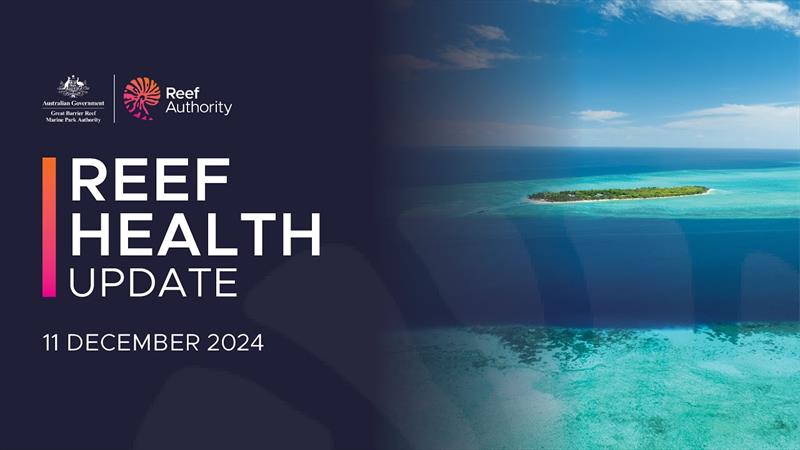
Great Barrier Reef health update
by Great Barrier Reef Marine Park Authority 12 Dec 2024 07:37 UTC

Reef Health update - December 2024 © Great Barrier Reef Marine Park Authority
The Reef Authority continues to monitor conditions on the Reef and work with its science, Traditional Owner and management partners to prepare for the 2024-25 summer.
The summer has commenced with global sea surface temperatures remaining at near record highs, and forecast models predicting elevated ocean temperatures across the Great Barrier Reef Marine Park over the coming months.
This forecast indicates a risk of thermal stress building across the Reef during summer.
From December to March, there is a high chance of unusually high rainfall for parts of the Reef, particularly the Cape York peninsula, with above average predictions for all other Marine Park catchment areas.
Air temperatures are also expected to be warmer than average throughout January to March.
Overall, the Bureau of Meteorology forecasts a wet and warm December, and then drier and warm conditions over the Great Barrier Reef for January. An average number of cyclones is forecasted typically four across the region. However, these cyclones are likely to be more intense due to warmer-than-average sea temperatures.
November and early December conditions
Temperatures
Sea surface temperatures throughout the Northern and Central regions were about 0.5 degreesC above average during November, and up to 0.8 degreesC above average in the Southern Region. Currently, sea surface temperatures are 0.5 degreesC above average for most of the Reef, but up to 1 degreesC above average in the Far Northern and Southern regions.
Rainfall
November saw lower than average rainfall for most Reef catchments. December is expected to bring higher than average rainfall particularly in the Northern regions.
Reef health
During November 559 Reef Health Impact Surveys were conducted across 72 reefs in the Marine Park, recording a low incidence of coral bleaching and coral disease mainly from the Central Region, between Townsville and the Whitsundays. These comprehensive surveys, conducted by trained and experienced managers and researchers, are designed to enable rapid assessment of reef condition.
Crown-of-thorns starfish populations continue at outbreak densities at the Swains Reef in the Marine Park's Southern Region, as well as on offshore reefs between Port Douglas and Lizard Island. Isolated outbreaks also persist on several reefs offshore Townsville and Whitsunday in the Central Region.
The outbreak of this starfish between Port Douglas and Lizard Island, an area known as the 'initiation zone', is concerning for its potential to 'seed' secondary outbreaks on downstream reefs further south.
In the lead up to the starfish's breeding season, typically late December at the start of the tropical wet season, the control program's focus is reducing its population in this initiation zone to suppress the buildup of the primary outbreak.
Reef management
Last week our annual summer workshop was held with management partners, Traditional Owners, scientists, tourism, and Reef-dependent industry representatives. Workshop participants focused on current conditions and the latest environmental forecast modelling to understand the likely outlook for summer, and to plan a coordinated approach for the months ahead.
It is too early to tell exactly what summer will bring, and local and regional conditions will ultimately influence Reef health outcomes.
Reef protection continues to be a year-round activity. We are working with our partners to protect and strengthen the resilience of the Reef through a range of management actions, including controlling coral-eating crown-of-thorns starfish and our year-round compliance campaign to deter illegal fishing.
If you are out in the Marine Park, you can report what you see through the Eye on the Reef app, and make sure you know your zones to help do your bit in protecting this World Heritage-listed natural wonder.